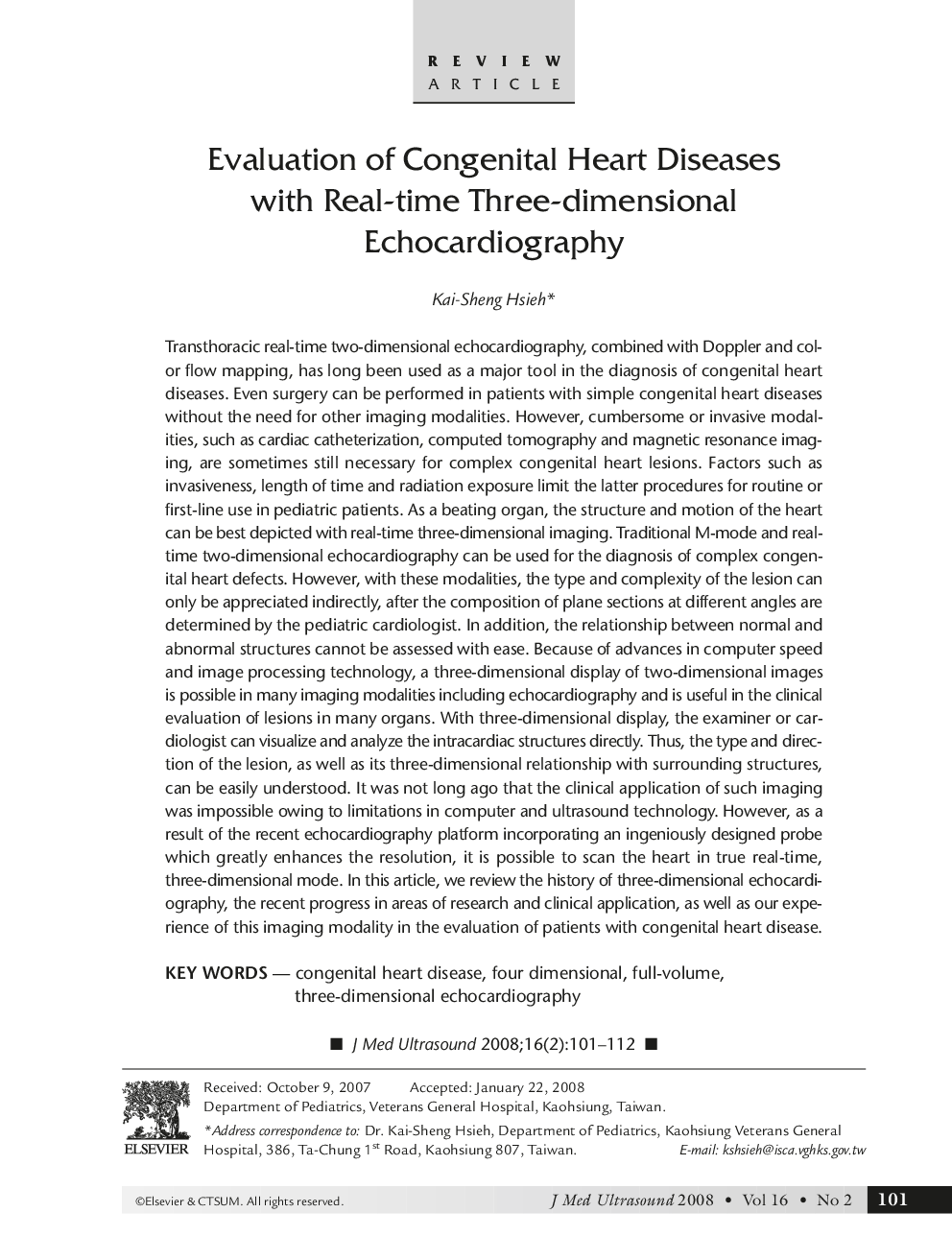| کد مقاله | کد نشریه | سال انتشار | مقاله انگلیسی | نسخه تمام متن |
|---|---|---|---|---|
| 4233239 | 1282719 | 2008 | 12 صفحه PDF | دانلود رایگان |

Transthoracic real-time two-dimensional echocardiography, combined with Doppler and color flow mapping, has long been used as a major tool in the diagnosis of congenital heart diseases. Even surgery can be performed in patients with simple congenital heart diseases without the need for other imaging modalities. However, cumbersome or invasive modalities, such as cardiac catheterization, computed tomography and magnetic resonance imaging, are sometimes still necessary for complex congenital heart lesions. Factors such as invasiveness, length of time and radiation exposure limit the latter procedures for routine or first-line use in pediatric patients. As a beating organ, the structure and motion of the heart can be best depicted with real-time three-dimensional imaging. Traditional M-mode and real-time two-dimensional echocardiography can be used for the diagnosis of complex congenital heart defects. However, with these modalities, the type and complexity of the lesion can only be appreciated indirectly, after the composition of plane sections at different angles are determined by the pediatric cardiologist. In addition, the relationship between normal and abnormal structures cannot be assessed with ease. Because of advances in computer speed and image processing technology, a three-dimensional display of two-dimensional images is possible in many imaging modalities including echocardiography and is useful in the clinical evaluation of lesions in many organs. With three-dimensional display, the examiner or cardiologist can visualize and analyze the intracardiac structures directly. Thus, the type and direction of the lesion, as well as its three-dimensional relationship with surrounding structures, can be easily understood. It was not long ago that the clinical application of such imaging was impossible owing to limitations in computer and ultrasound technology. However, as a result of the recent echocardiography platform incorporating an ingeniously designed probe which greatly enhances the resolution, it is possible to scan the heart in true real-time, three-dimensional mode. In this article, we review the history of three-dimensional echocardiography, the recent progress in areas of research and clinical application, as well as our experience of this imaging modality in the evaluation of patients with congenital heart disease.
Journal: Journal of Medical Ultrasound - Volume 16, Issue 2, 2008, Pages 101-112